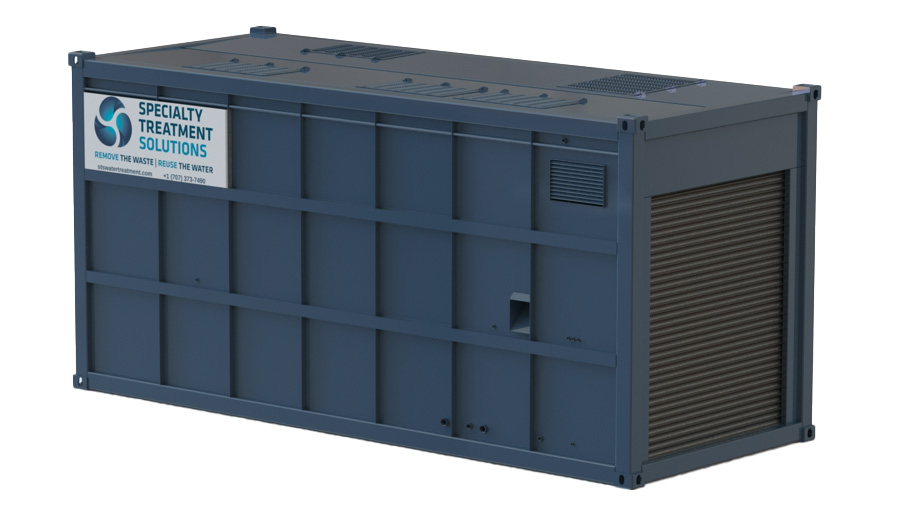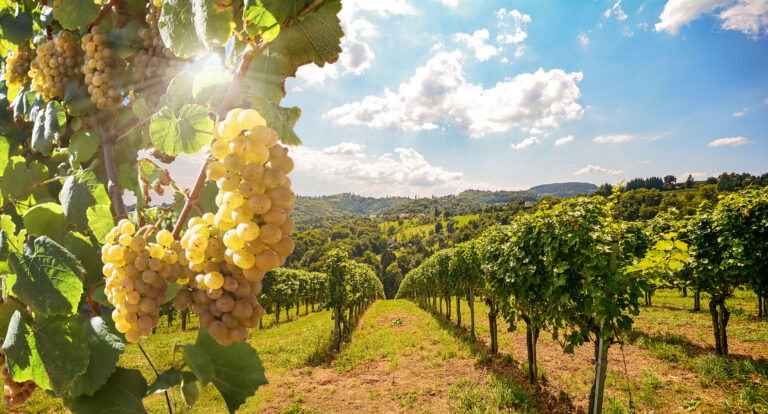Winery Water Footprint
How much water does it take a winery to produce a bottle of wine, and how does that contribute to the cost of the entire winery operation? Knowing your operation’s water footprint has never been more important. As climate change drives droughts and water scarcity, water becomes more expensive to buy, and regulations regarding winery processes and wastewater become more restrictive. All of this has the potential to increase the total cost of production, especially when considering the discharging fees of the wastewater.
If a winery reviews and reduces their water consumption/water footprint, they can reduce costs both in production and in treating the winery wastewater. The less wastewater produced, the lower the cost is to treat the water.
Calculation of the winery water footprint
The water footprint of a business is simply how much freshwater is used, both directly and indirectly, to produce the product or service of that business. It is generally measured in liters or gallons, and is made up of three components:
WF = WFblue+WFgreen+WFgrey
- Blue water – The volume of fresh surface and ground water (well, aquifer, run-off, etc.) withdrawn from the land and consumed during the winery production process.
- Green water – The volume of rainwater that infiltrates the soil and is available to plants during their growth cycle.
- Grey water – An estimate of the virtual volume of water needed to dilute pollutants. Grey water is directly associated to pollution and degradation of the water resource.
The first two contributions, the blue water footprint, and the green water footprint, evaluate real volumes of water that are consumed during the process. The grey water footprint, on the other hand, is an estimate of a virtual volume: the water needed to assimilate the pollutants. This volume is not taken from a well-defined place or at a well-defined time.
Winery Water Footprint
Just how much water does it take for a vineyard to produce a bottle of wine? The number vary depending on the location, operations and even type of wine produced. One study carried out by the University of Perugia and sponsored by the Italian Ministry for the Environment showed that a good estimation of the water footprint of a .75L bottle of wine is 632.2L. While green water makes up a majority of that amount, the blue and grey water are the two which impact the environmental footprint the most. Blue water contributes to water scarcity, and grey water contributes to water degradation.
[table id=5 /]
Note: * a wine bottle is 0.75 L. ** a wine glass is 0.215 L.
You can review the full result of the study and methodology used here.
How to Reduce the Winery Water Footprint
A variety of steps can be taken to reduce an operation’s water footprint, both blue water and grey water quantities. Doing so helps protect the environment and reduces the total production costs for a winery.
How to reduce winery blue water footprint
The best way to reduce blue water usage is by fine-tuning the wine production operation. Two-thirds of water used in an operation is for sanitation and cleaning, so evaluating your operation and streamlining cleaning processes will reduce how much water is used, and reduce time and labor costs, making wine production more efficient. This will lead to a reduction of operational and water supply costs. We have a in-depth guide on how to reduce the winery wastewater.
How to reduce winery grey water footprint
Grey wastewater can directly contribute to pollution of the water table. Although the winery wastewater characteristics differ from one facility to another, they are usually characterized by low pH, high salinity and nutrient levels and it is potentially harmful to the environment if not treated before discharge or disposal. It can lead to algae blooms, nuisance odors, impact on crop growth, and poor groundwater quality.
Grey water can be treated and recycled, and then used in irrigation and other non-potable uses. Given the large water footprint of a winery, and the wastewater produced, water recycling and treatment throughout winery operations is very important. Properly treating wastewater allows it to be reused, thus reducing both grey water and the total water footprint of the winery.

Examples of water recycling are using clean-in-place tanks, which reuse water in cleaning cycles, or using the cleaned process water for cleaning equipment and floors, and in vineyard irrigation or fire protection. We have another guide with more ideas on how to reuse the winery wastewater.
In summary, reducing a winery’s water footprint is a three step process. Evaluate the operation processes to streamline steps and water usage, install a quality water treatment system that treats wastewater, and reuse the cleaned process water in the operation.
STS can help wineries with reducing their water footprint; our wastewater treatment systems clean and recycle wastewater while complying with California Wastewater Regulations an other local agencies. These proven systems are streamlined to use less water, and provide effluent well below the state regulations, which allows it to be reused in the operation.
Contact us today for more information on our customized wastewater solutions.






